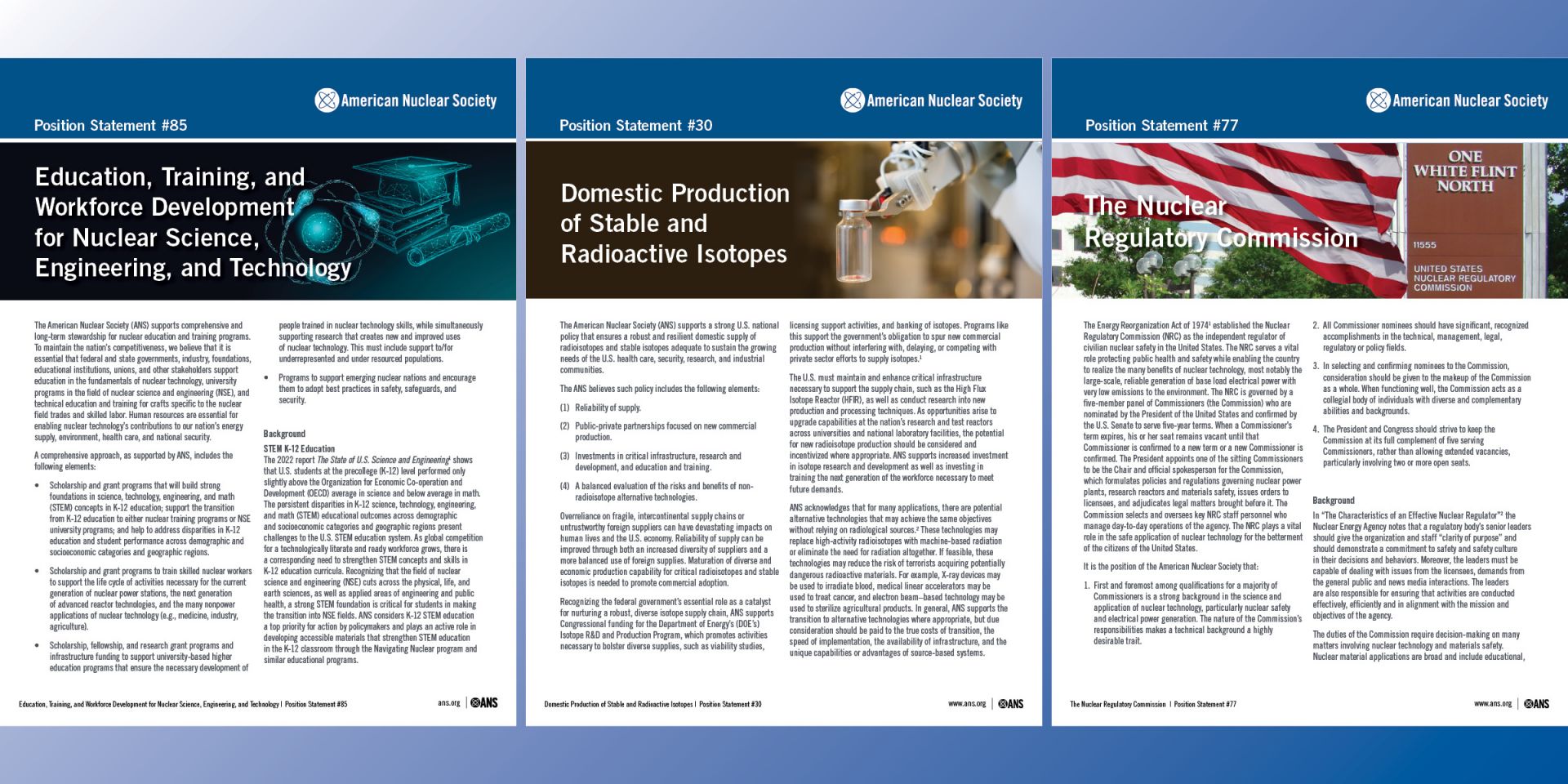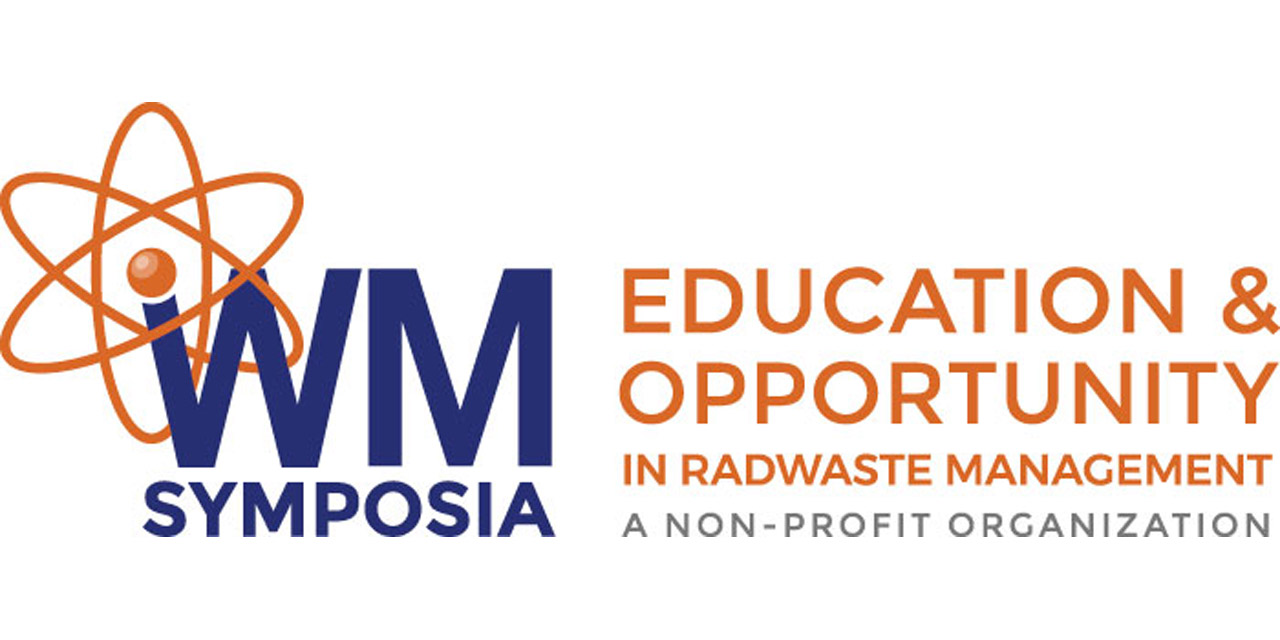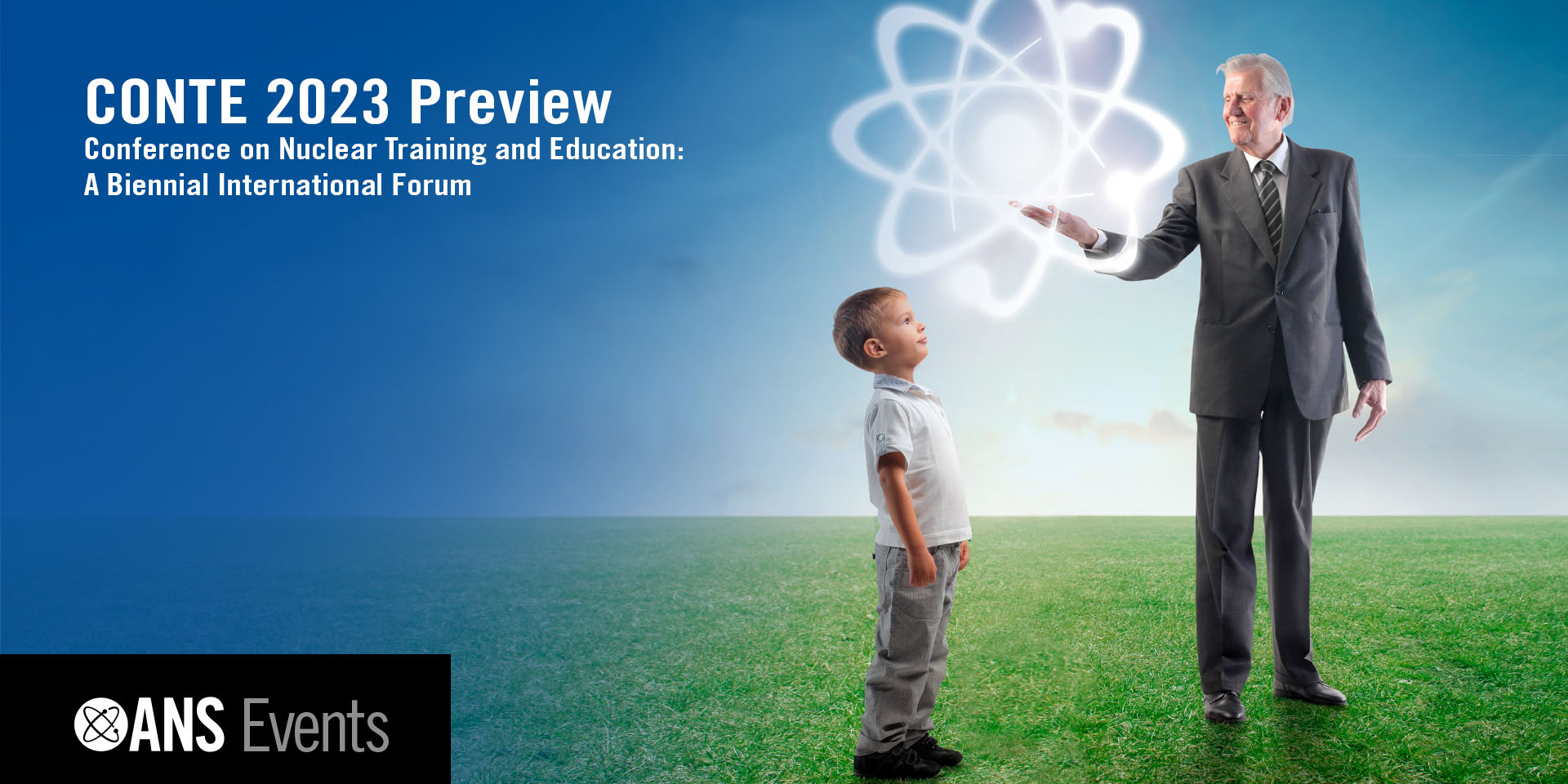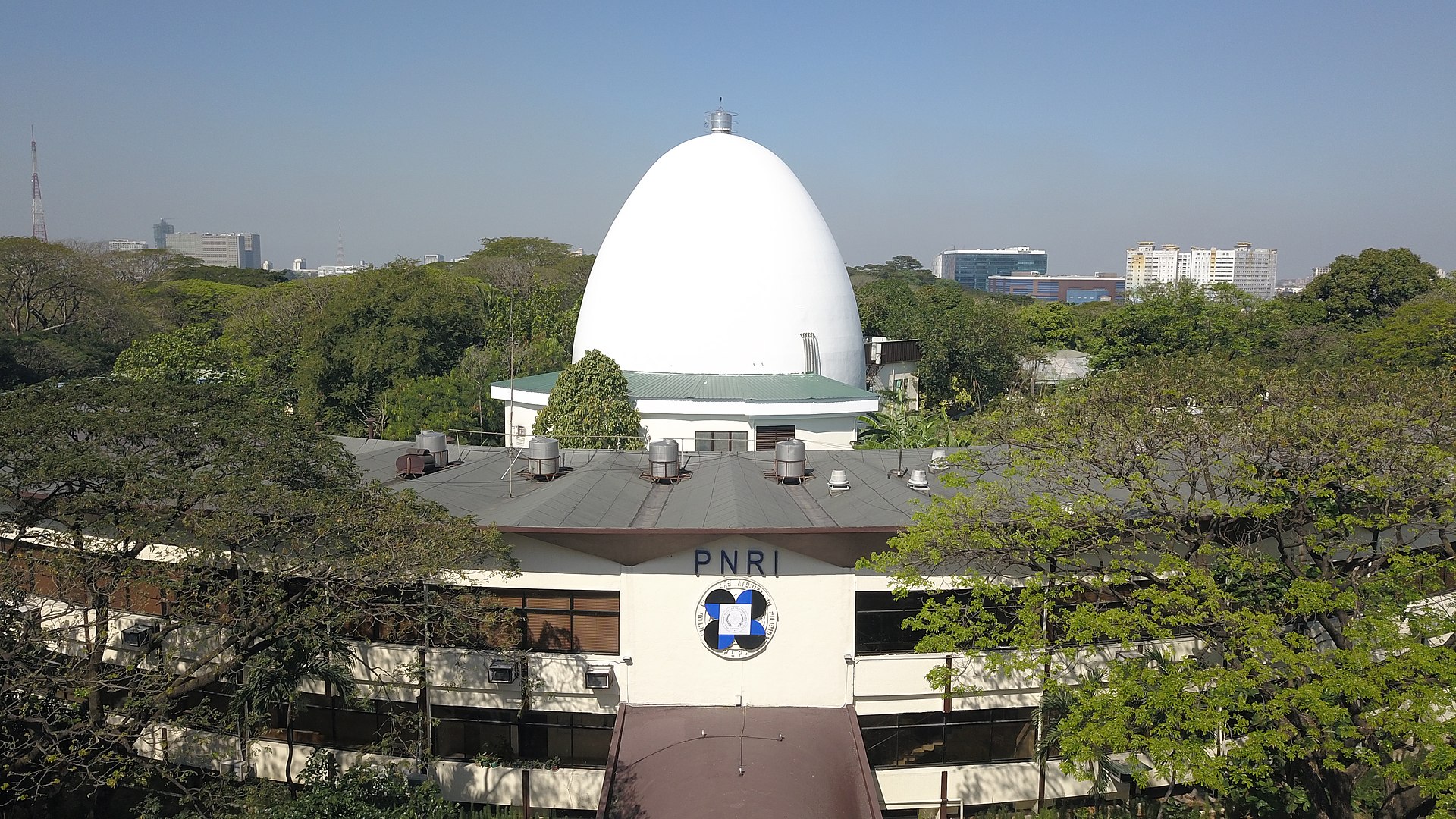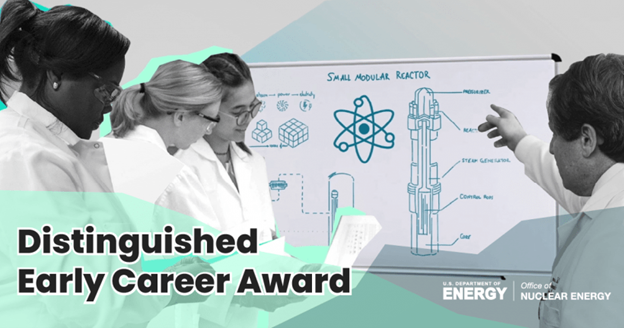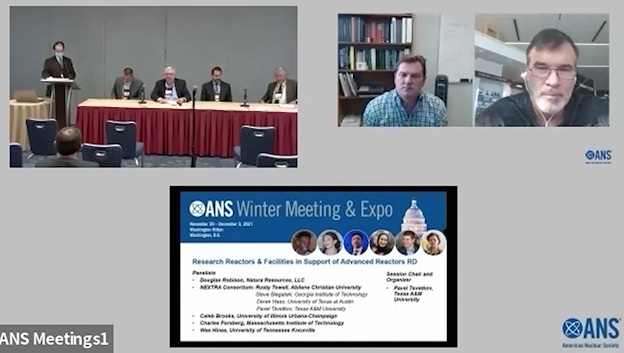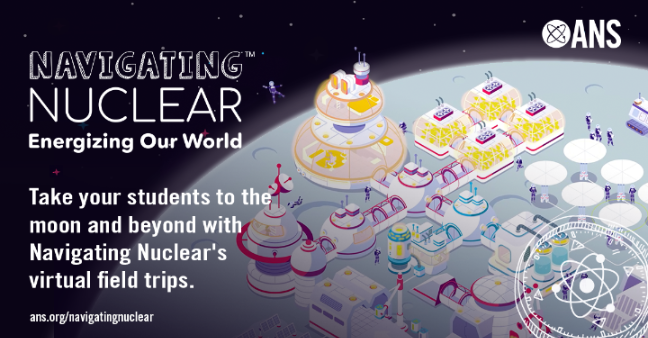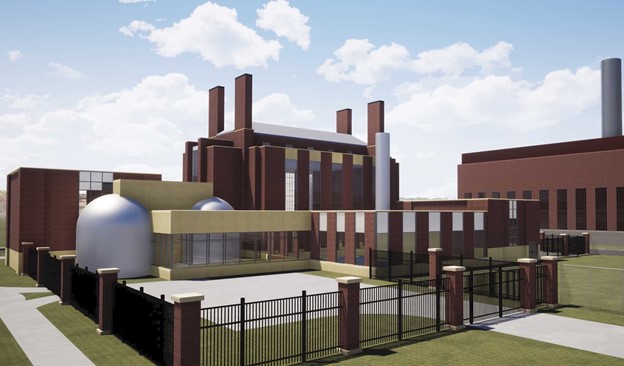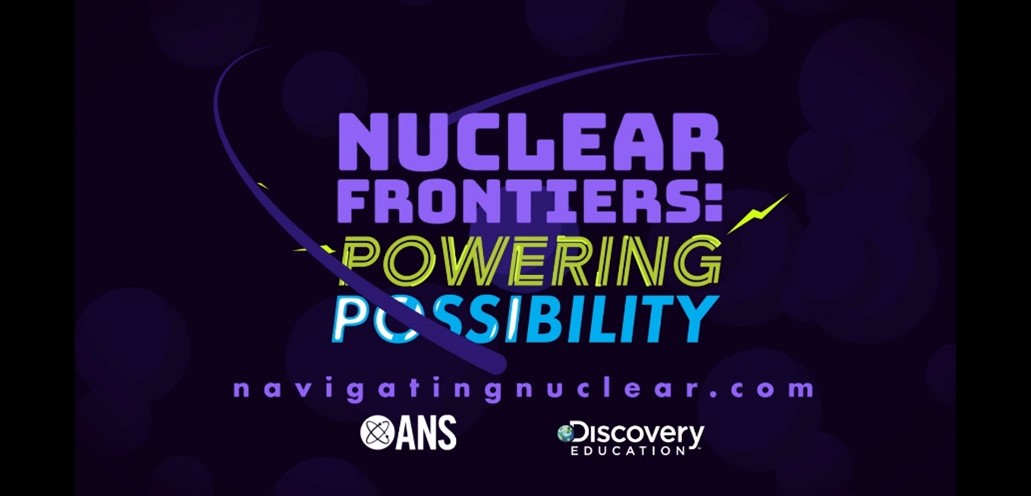The Philippine Research Reactor-1 building at the University of the Philippines. (Photo: PNRI)
The research reactor known as SATER (Subcritical Assembly for Training, Education, and Research), housed in at the Philippine Research Reactor-1 building at the University of the Philippines in Quezon City, has become operational. As recently reported by the International Atomic Energy Agency, the core of SATER was loaded with 44 fuel rods, bringing the Philippines its first operational nuclear reactor in 34 years. Through this event, the country has moved a big step closer to meeting the government’s goal of adding nuclear power to its energy resources. The reactor is expected to become fully operational by 2023.
From left to right, Richmond County Technical Career Magnet School (Team 1) students Leila Cortez, Jaidyn Moore, and Tamea Dunnom and teacher Carla Biley won third place in Best Engineering Student Design at the WORCshop@AU event. They are joined by Rick Connolly, SRNS operations and maintenance director and WORCshop@AU judge (second from right).
Savannah River Nuclear Solutions (SRNS), the Department of Energy contractor responsible for the management and operations of the Savannah River Site in South Carolina, partnered with Augusta University to create WORCshop@AU, an education outreach opportunity to introduce local high school students to nuclear science careers by solving a real-world problem. The program concluded on December 9, when student teams presented their solutions during a friendly competition.
A screen shot from the “Research Reactors in Support of Advanced Reactor R&D” session at the 2021 ANS Winter Meeting and Technology Expo.
First-of-a-kind research reactors, demo reactors, and research facilities are being developed and sited on university campuses to support the broader deployment of advanced reactors. At the 2021 ANS Winter Meeting and Technology Expo, during a December 2 panel session titled “Research Reactors in Support of Advanced Reactor R&D,” several of these planned projects were discussed in detail—including a molten salt reactor in Texas and a high-temperature gas–cooled reactor in Illinois.
The session was sponsored by the Reactor Physics Division and organized and chaired by Pavel Tsvetkov, of Texas A&M University. A video of the session is available to registered Winter Meeting attendees.
Free online K-12 curriculum on nuclear science includes virtual field trips, project starters and lessons
With back-to-school season upon us, the American Nuclear Society (ANS) is excited to announce that our Navigating Nuclear: Energizing Our World curriculum now reaches all grade levels and can be accessed at ans.org/navigatingnuclear.
A rendering of Ultra Safe Nuclear Corporation’s micro modular reactor as proposed for construction on the University of Illinois at Urbana-Champaign campus. (Graphic: USNC)
The U.S. state with more nuclear power plants than any other—Illinois—has no operating university research reactors. A team at the University of Illinois at Urbana-Champaign (UIUC) intends to reverse that situation and construct a high-temperature gas-cooled microreactor. If the team's plans go ahead, the first new U.S. university research reactor deployment in about 30 years could also support commercial advanced reactor deployment.
Photo: NASA, ESA, and STScI
 The new ANS STEM Academy launched at the end of 2022 encompasses all of the American Nuclear Society’s educational programs. It brings together a state-of-the-art curriculum with nuclear experts and enriches classroom experiences to enable a national expansion of K-12 nuclear science and technology education. The new program strives to serve educators, students, and everyone interested in nuclear science and technology.
The new ANS STEM Academy launched at the end of 2022 encompasses all of the American Nuclear Society’s educational programs. It brings together a state-of-the-art curriculum with nuclear experts and enriches classroom experiences to enable a national expansion of K-12 nuclear science and technology education. The new program strives to serve educators, students, and everyone interested in nuclear science and technology.

